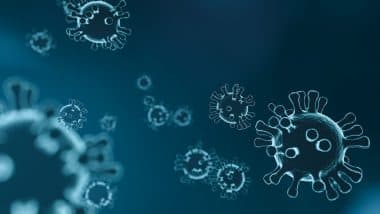New Delhi, August 10: Guinea in South Africa has confirmed a death due to Marburg virus, the World Health Organisation (WHO) said on Monday. This is the first case of Marburg virus in Guinea and in South Africa. According to the WHO, the deadly virus is related to Ebola virus. Like COVID-19, Marburg virus disease also passed from animal hosts to humans. From symptoms to transmission and treatment to prevention, know all about Marburg virus below. What Is Monkeypox? Texas Man Found Infected With Viral Illness Caused by Monkeys, Know Its Symptoms, Transmission and Treatment.
A person, male, died on August 2 in southern Gueckedou prefecture. He had onset of symptoms on 25 July. On August 3, a real-time PCR was conducted and his samples tested positive for Marburg virus disease and negative for Ebola virus disease. The detection of the lethal virus comes just two months after the WHO declared an end of second outbreak of Ebola in Guinea. White Fungus Causes, Prevention, and Treatment: Signs and Symptoms of the Infection That Is Said to Be More Dangerous than Black Fungus.
What Is Marburg Virus?
First recognised in 1967, Marburg virus is a hemorrhagic fever virus. According to the WHO, Marburg virus disease is a highly virulent and epidemic-prone disease with a fatality ratio of up to 88 percent. The reservoir host of Marburg virus is the African fruit bat, Rousettus aegyptiacus.
What Are Symptoms of Marburg Virus Disease?
Initially, a person infected with Marburg virus experiences high fever, severe headache and severe malaise abruptly. Following nearly five days after the onset of symptoms, a maculopapular rash, most prominent on the trunk (chest, back, stomach), may occur. Nausea, vomiting, chest pain, a sore throat, abdominal pain, and diarrhea may then appear.
Transmission:
Though a very rare human disease, when Marburg virus disease occurs, it has the potential to spread to other people. It is unknown how Marburg virus first transmits from its animal host to humans. According to US Centre for Disease Control and Prevention, unprotected contact with infected bat feces or aerosols are the most likely routes of infection. Once the virus is transmitted to humans from its animal hosts, person-to-person transmission may happen.
Treatment:
There is no specific treatment for Marburg hemorrhagic fever. There is no vaccine either. Supportive hospital therapy, which includes balancing the patient’s fluids and electrolytes, maintaining oxygen status and blood pressure and treatment for any complicating infections, should be utilized.
Preventive Steps:
There are no well-defined preventive measures for Marburg virus. Avoiding fruit bats, and sick non-human primates in central Africa, is one way to protect against infection. When a person is diagnosed with the disease, s/he should be placed in strict isolation. Healthcare workers treating the patient must wear protective gowns, gloves, and masks.
(The above story first appeared on LatestLY on Aug 10, 2021 12:31 PM IST. For more news and updates on politics, world, sports, entertainment and lifestyle, log on to our website latestly.com).












 Quickly
Quickly


